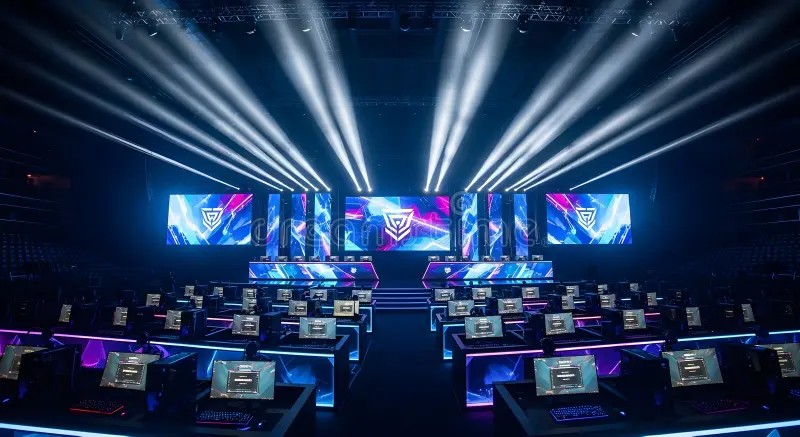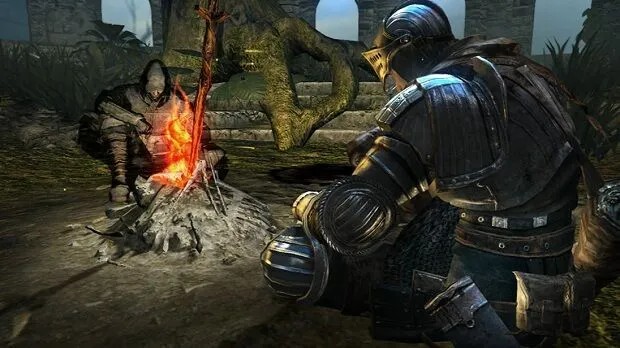The Evolving Battlefield: Analyzing Valorant’s Latest Foundational Update
In the fast-paced world of competitive FPS Games, stagnation is the enemy of longevity. Riot Games has consistently demonstrated an understanding of this principle, treating Valorant not as a static product but as a living, breathing ecosystem that requires constant tuning, balancing, and refinement. The latest patch serves as a testament to this philosophy, delivering a focused yet profoundly impactful set of changes that ripple through every level of play, from casual lobbies to the highest tiers of professional Competitive Gaming. While not packed with the flash of a new agent or map, this update is arguably more critical, addressing core gameplay mechanics, player quality of life, and the foundational stability that underpins a top-tier esport. This article provides a comprehensive technical breakdown of the key changes, exploring the restoration of Cypher’s signature utility, the intelligent overhaul of the competitive map rotation, and the crucial extermination of long-standing bugs. We will delve into the strategic implications for players, offering actionable insights to help you adapt and thrive in this newly refined tactical landscape. This is essential reading for anyone invested in the latest Valorant News and the broader trends in PC Gaming.
Section 1: The Sentinel’s Resurgence: A Technical Breakdown of the Cypher Buff
For months, the Moroccan information broker, Cypher, has been in a precarious position within the agent meta. While never truly unviable, he was often overshadowed by other Sentinels who offered more direct impact or easier-to-manage utility. This latest patch directly targets his core identity by restoring the power and persistence of his signature Trapwire, fundamentally altering his role as a site anchor and flank watcher.
The Pre-Patch Predicament: Why Cypher Was Falling Behind
Before this update, Cypher’s Trapwires suffered from a critical vulnerability: they were a one-and-done utility. Once an enemy triggered a wire, it would be consumed and destroyed in the process. This meant that a single aggressive push could dismantle an entire defensive setup, leaving Cypher with limited resources to hold back subsequent waves of attackers. In a fast-paced game like Valorant, where utility trading is key, this made his traps feel less valuable compared to Killjoy’s Turret, which provides persistent information and damage, or Chamber’s teleport, which offers unparalleled safety. This issue was a frequent topic in Gaming Community forums and a key piece of Game Design feedback, pushing Riot to reconsider the agent’s core loop.
Restoring the Trapwire: The Mechanics of the Change
The update introduces a game-changing mechanic to Cypher’s Trapwire. Instead of being destroyed upon activation, a triggered Trapwire will now briefly reveal and concuss the enemy as before, but will then enter a short re-arming phase. After a 1.5-second delay, the Trapwire becomes fully active again, ready to catch another opponent.
Key Specifications of the New Trapwire:
- Activation: Still triggers when an enemy crosses it.
- Effect: Concusses and briefly reveals the triggered enemy.
- Post-Activation State: Becomes temporarily inactive and invisible.
- Re-arm Time: 1.5 seconds.
- Audio/Visual Cue: A subtle audio hum and visual shimmer indicate the trap is re-arming and has become active again.
- Destructibility: The trap can still be destroyed by damage before or after it has been triggered.
This change transforms the Trapwire from a disposable alarm system into a persistent, area-denial tool. It forces attacking teams to expend more resources (such as a Sova Recon Bolt or Fade Prowler) to clear his setup, or risk being caught by the same trap twice. This small but significant tweak has massive implications for both holding sites and watching for flanks, making Cypher a far more formidable and resource-efficient Sentinel.

Section 2: Rebalancing the Battlefield: A Deep Dive into Map Rotation Adjustments
A common point of feedback within the Valorant News cycle has been the feeling of repetition in the competitive map queue. Players frequently reported playing the same one or two maps multiple times in a single session, leading to burnout and a less diverse gameplay experience. This update addresses the issue head-on by implementing a more intelligent map selection system, moving away from pure randomness towards a “pseudo-random” logic designed to promote variety.
The Problem with True Randomness in Map Selection
In a purely random system, every map in the pool has an equal chance of being selected for each new match, regardless of what maps a player has recently played. While fair in a statistical vacuum, this often leads to frustrating streaks in practice. It’s the classic coin-flip problem: while the odds are 50/50 each time, it’s entirely possible to get “heads” ten times in a row. For Valorant players, this meant potentially getting Ascent three times in five games while not seeing a map like Lotus or Pearl for an entire evening. This lack of variety can stifle strategic growth and make the ranked grind feel monotonous, a problem seen across many AAA Games in the Gaming Industry.
The New “Weighted” Map Rotation Logic
The new system introduces what can be described as “recent-play protection.” While Riot hasn’t released the exact algorithm, the logic functions by tracking the maps you have recently played and significantly lowering the probability of those same maps being selected for your next match. For example, if you just finished a competitive game on Bind, the system will heavily weigh the other maps in the pool for your next queue, making it highly unlikely you’ll get Bind again immediately. This approach is a best practice in modern Game Development, ensuring a better user experience without removing any maps from the pool entirely.
This change has a direct impact on the Competitive Gaming ladder. Players can no longer rely on mastering just two or three “comfort pick” maps. To climb consistently, a player must now develop at least a baseline competency across the entire active map pool. This encourages a deeper understanding of the game’s strategic nuances and makes for a more well-rounded and skilled player base. This is crucial for anyone aspiring to enter the Esports News scene, where map pool depth is a key differentiator between teams.
Section 3: Crushing Long-Standing Bugs for Enhanced Competitive Integrity
In a game of millimeters and milliseconds, bugs and unintended interactions can compromise the very foundation of fair competition. This patch delivers a suite of crucial bug fixes that address long-standing issues reported by the Gaming Community, reinforcing the game’s stability and reliability—a critical factor for players using high-performance Gaming PCs with powerful Graphics Cards and high-refresh-rate Gaming Monitors.
The Corrosive Effect of Gameplay Bugs

Bugs can manifest in countless ways, from visual glitches to game-breaking exploits. An audio bug that muffles the sound of a Spike defuse can lose a round. A physics bug that allows an agent to clip into an unintended location can create an unfair one-way angle. A utility bug, such as a flashbang not working as intended, can render an agent’s ability useless at a critical moment. These issues erode player trust and can make the outcome of a match feel arbitrary rather than skill-based. Addressing them is a top priority, often powered by the detailed feedback loop between players and developers using engines like the Unreal Engine News often highlights.
Case Studies: Notable Fixes and Their Impact
While the full patch notes are extensive, several key fixes in this update stand out for their impact on gameplay integrity:
- Skye’s Guiding Light Fix: A notorious bug sometimes allowed Skye’s flash to pass through the very edge of thin walls or map geometry, blinding players who should have been safe. This has been corrected, ensuring that her flash now reliably respects line of sight rules. This makes counter-play more consistent and predictable.
- Spike Defuse Audio Occlusion: An intermittent but devastating bug could cause the defuse sound to be improperly occluded by geometry, making it much quieter or even inaudible from certain angles. This fix ensures the audio propagation for this critical sound cue is consistent, allowing players to reliably play for sound in post-plant situations.
- Jett “Super-Dash” Exploit on Haven: A specific interaction with Jett’s Updraft and Tailwind on certain sloped surfaces on Haven’s C-site allowed players to launch themselves into a normally inaccessible high-ground spot above the site. This exploit has been removed by smoothing the relevant geometry, eliminating an unfair and unintended sightline.
These fixes, while seemingly small, are monumental for the game’s health. They ensure that the rules of engagement are consistent for all players, allowing skill, strategy, and teamwork—not exploits—to determine the outcome of a match. This is the bedrock of any successful title in the world of Esports News and Twitch News, where competitive fairness is paramount.
Section 4: Actionable Insights and Strategic Recommendations
Understanding the patch notes is one thing; applying that knowledge to win more games is another. This section provides practical tips and best practices to help you leverage these changes to your advantage, whether you’re using a top-tier Gaming Laptop or a custom-built rig with the best Gaming Peripherals.

Best Practices for the New Cypher Meta
The re-arming Trapwire opens up a new world of strategic possibilities. To maximize its value, players should shift their mindset from using traps as single-use alarms to using them as persistent zone control tools.
- High-Traffic Chokepoints: Place your re-arming traps in primary chokepoints that attackers are likely to push through multiple times, such as Ascent’s A-Main or Haven’s Garage entrance. A single trap can now stall multiple waves of a push.
- Layered Defenses: Combine your Trapwire with a deep Cyber Cage. When an enemy triggers the wire, activate the cage. They will be concussed and slowed inside the smoke, making for an easy kill. If you miss, the trap will re-arm, ready for the next player.
- Anti-Flank Persistence: A single trap watching your flank is now significantly more powerful. Previously, one lurker could break it and open the floodgates. Now, that same trap will re-arm, providing continuous information and deterrence throughout the round.
Adapting to the Balanced Map Rotation
With the new map rotation logic, dodging your “bad” maps is no longer a viable long-term strategy. It’s time to embrace the full pool.
- Utilize Custom Games: Spend 15-20 minutes before your ranked session in a custom game on a map you’re uncomfortable with. Practice ability lineups, test angles, and simply run around to improve your map knowledge.
- Watch Pro VODs: Search for professional matches on maps you struggle with. Pay close attention to how teams handle site executes, retakes, and default setups. This is a fantastic way to learn high-level strategies.
- Develop a “Flex” Agent: Have at least one agent you can play competently on every map. While you may main a duelist, learning a controller or initiator for maps that demand it (like Viper on Breeze or Sova on Ascent) will make you a more valuable teammate.
Conclusion: A Lean but Vital Step Forward for Valorant
This latest Valorant patch is a masterclass in targeted, impactful game maintenance. It demonstrates a keen awareness of the Gaming Community’s most pressing concerns without resorting to sweeping, meta-breaking changes. The intelligent buff to Cypher breathes new life into a beloved agent, re-establishing his identity as a premier site anchor and creating new strategic depth. The overhaul of the map rotation system is a direct and effective response to player feedback, promoting variety and rewarding versatile skill sets. Finally, the diligent elimination of persistent bugs reinforces the game’s competitive integrity, ensuring that player skill remains the ultimate deciding factor. For the dedicated Valorant player, this update is a clear signal that the game’s foundation is stronger than ever, promising a more balanced, diverse, and fair battlefield for the foreseeable future. This commitment to refinement is what keeps Valorant at the forefront of PC Gaming and a dominant force in the global esports landscape.











